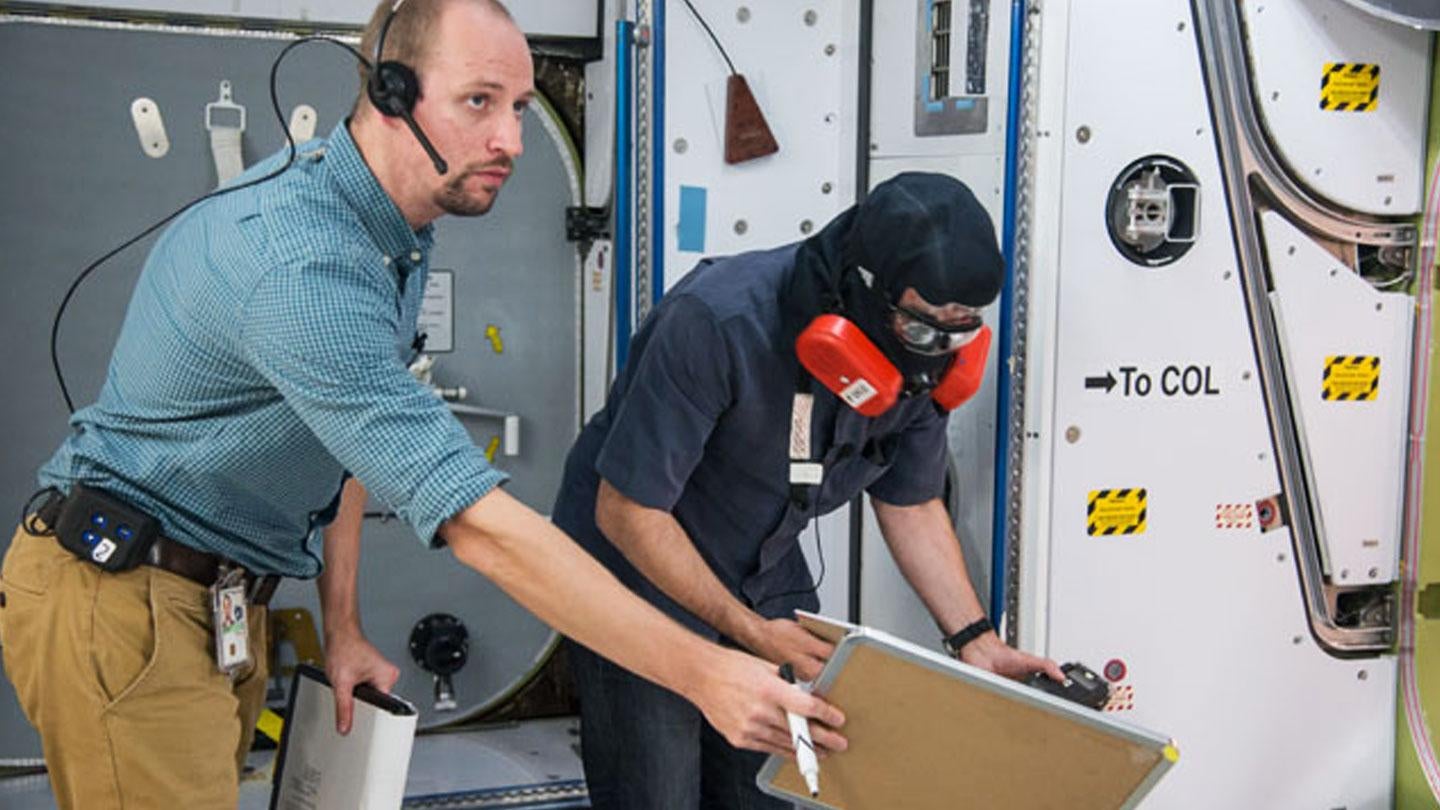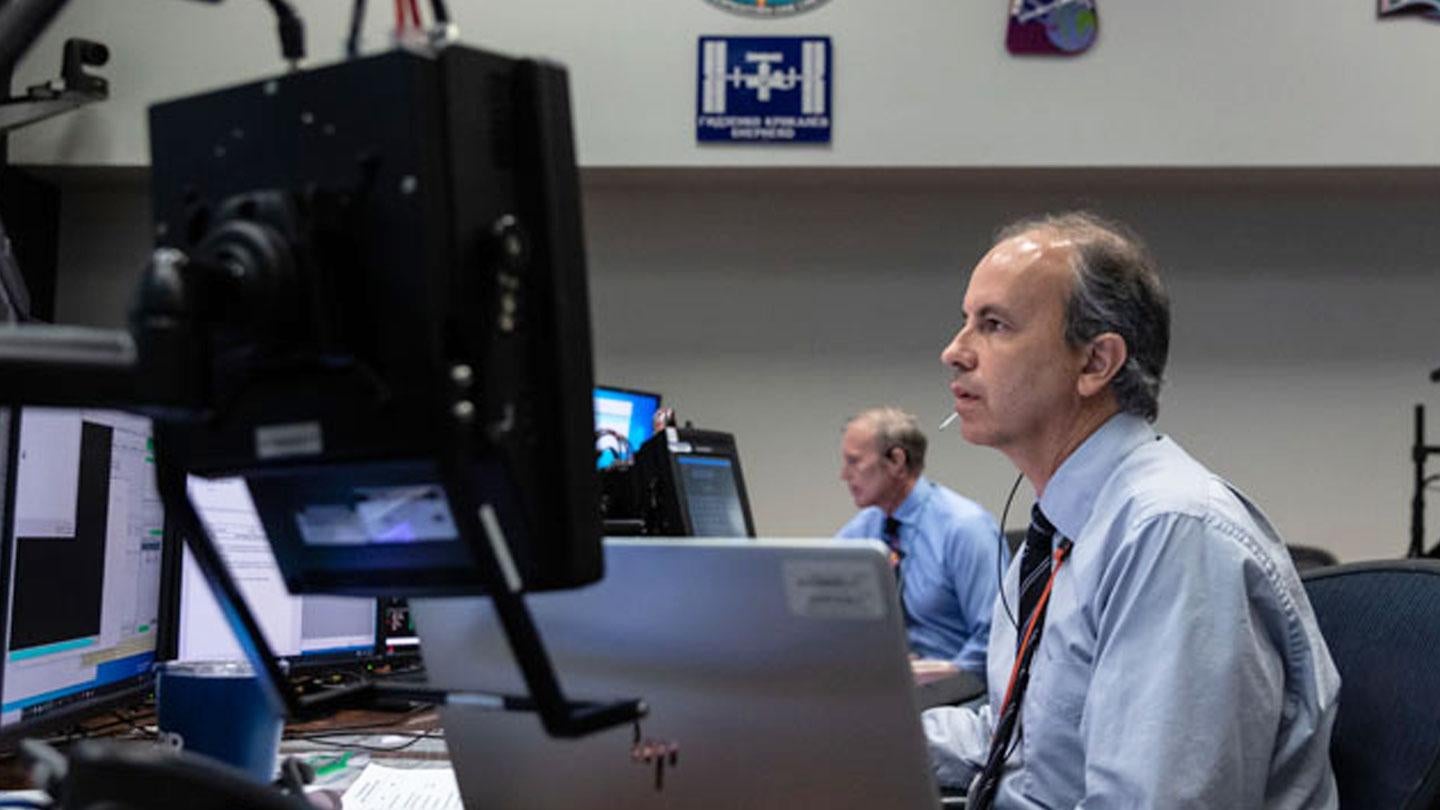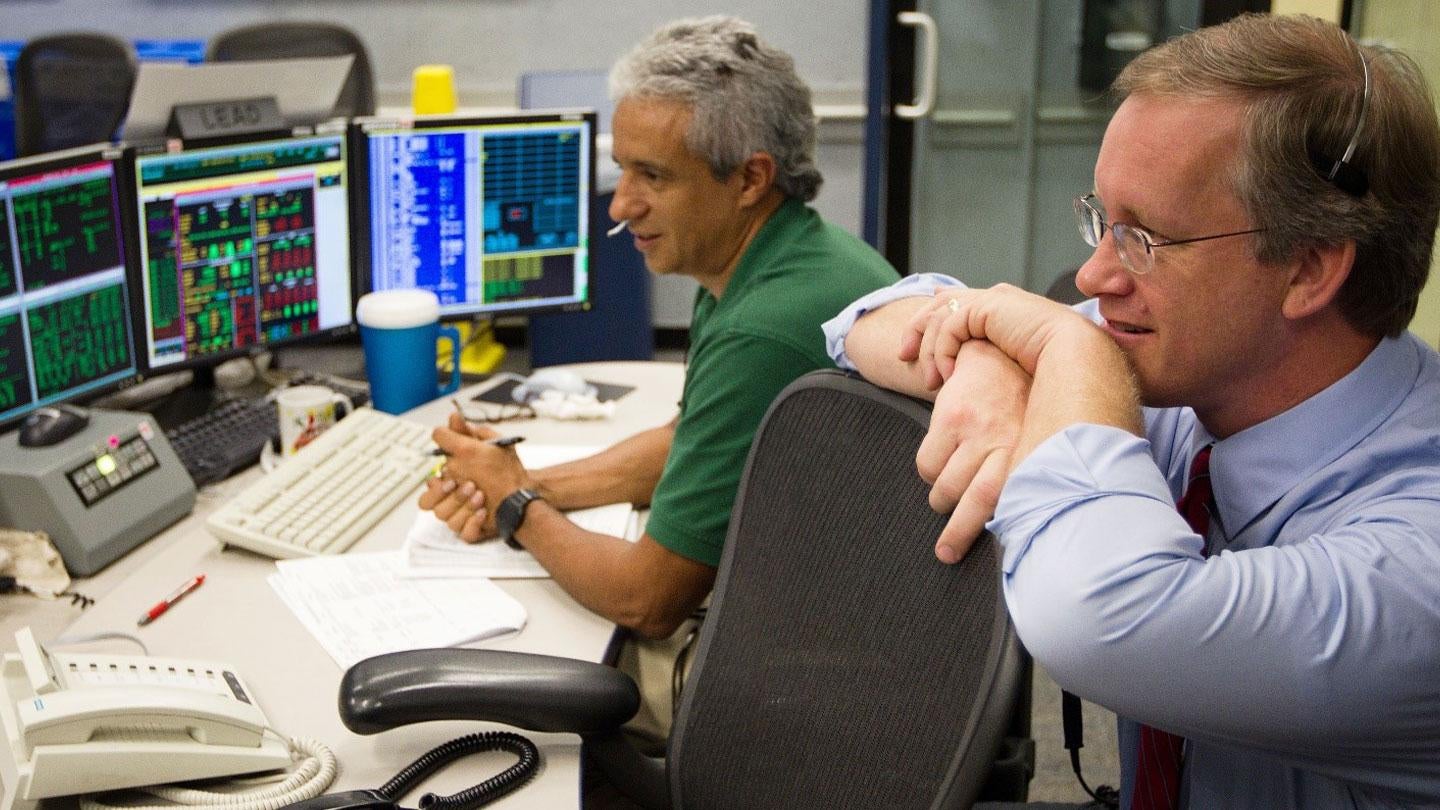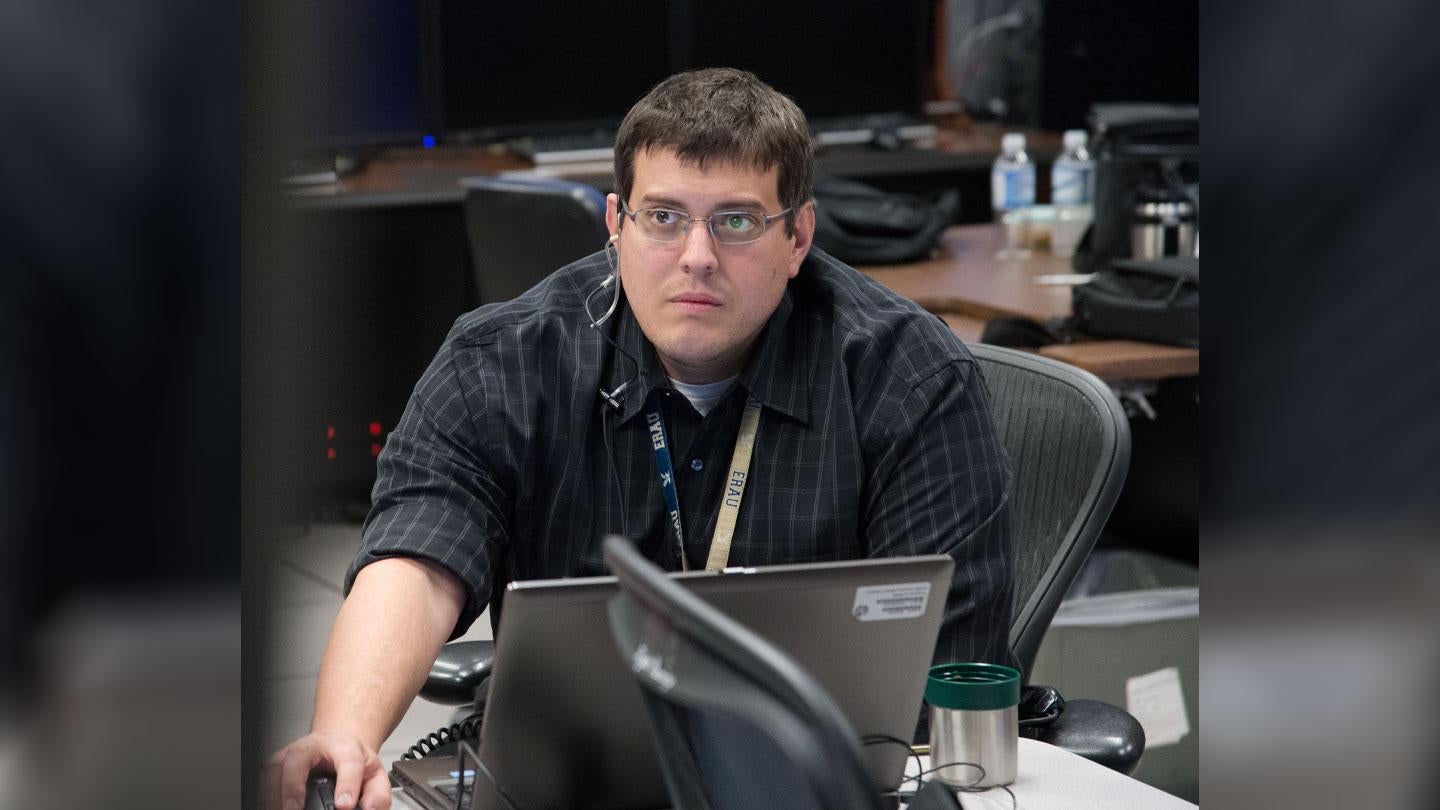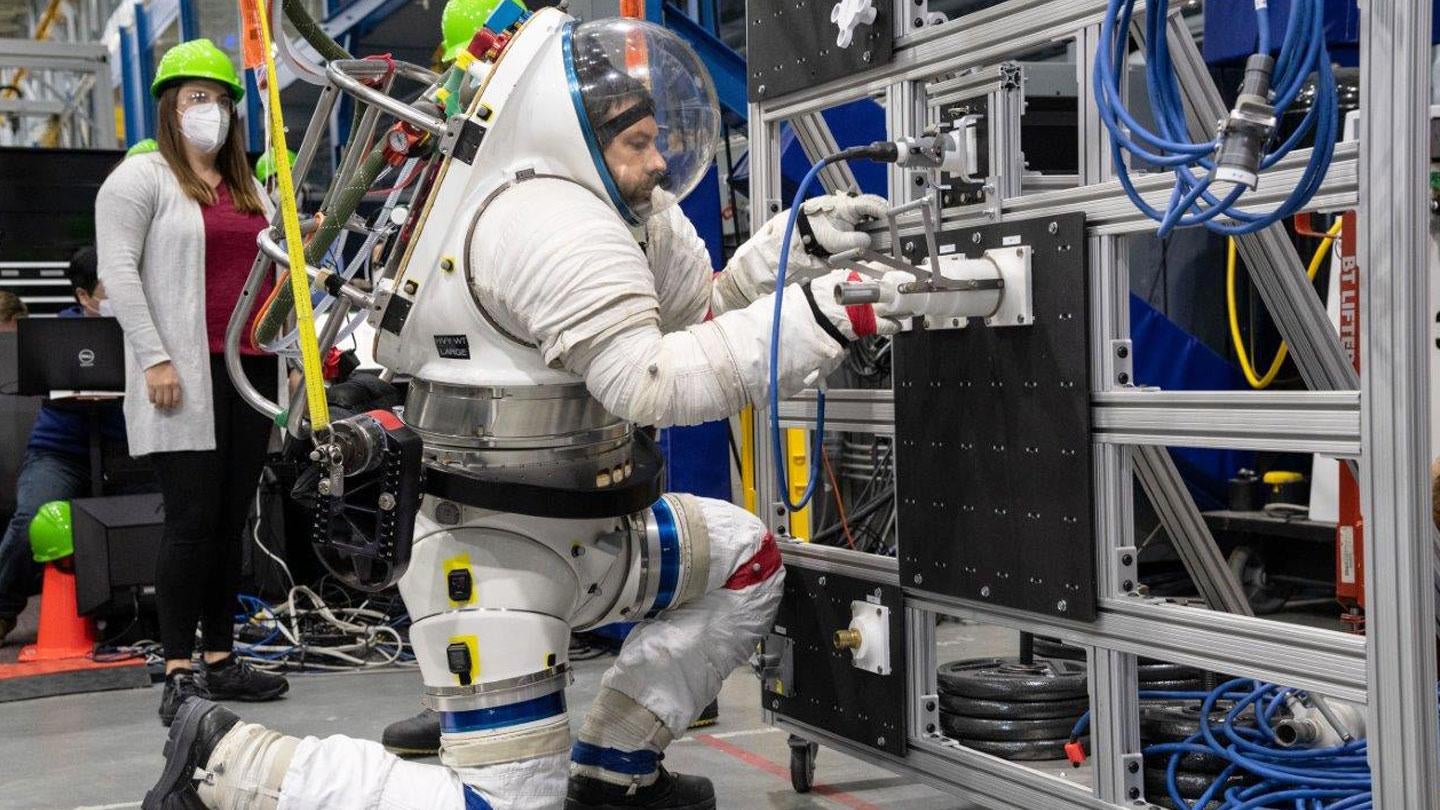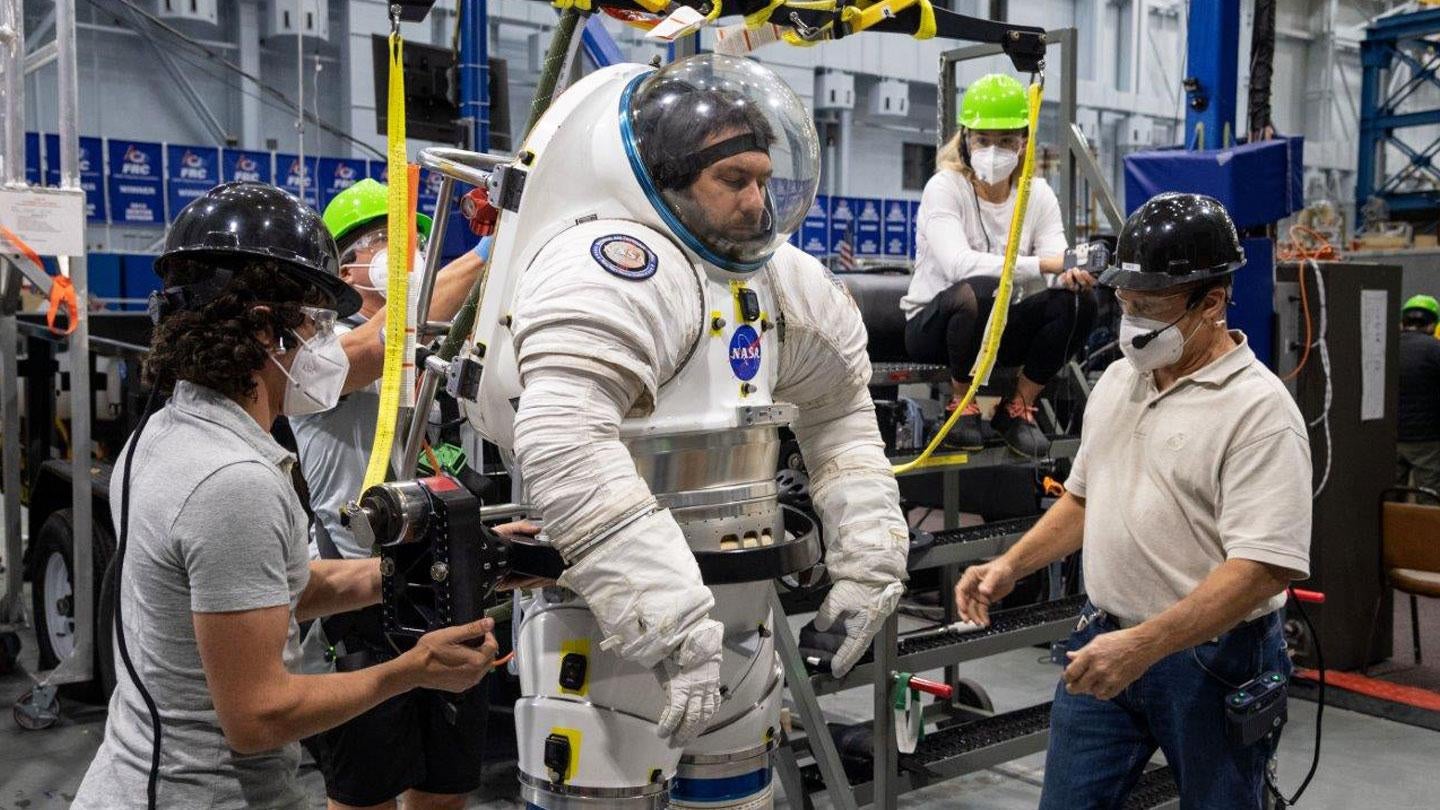Mission to Mars: KBR Experts Decode Sci-Fi Show Plausibility
For years, science fiction books, movies and television shows have filled our minds with countless visions of tomorrow. As a leader in space and mission solutions, KBR has been crafting the future of space exploration since the early 1960s through numerous endeavors involving mission operations, space and occupational medicine, biomedical and environmental research, human systems engineering, astronaut training, spacesuit management and military space.
Netflix’s recent series, “Away,” follows the first crew on expedition to Mars. While no one on planet Earth has yet to attempt a manned mission to Mars, NASA’s lunar exploration plans are working in that direction. Since the show was set as if it could have taken place tomorrow, the question begs: How realistic, if at all, was the crew’s experience? We asked KBR experts to help decipher how well the show portrayed reality from plausible (10) to not plausible (1).
Science fiction or Non-fiction?
On a scale from 10 (plausible) to 1 (not plausible)
Scenario: Chemical leak on the spacecraft heading to Mars causes a floating fire ball that is accelerated by a sweaty t-shirt; the crew extinguishes the fire by catching it in a large bag of water
Plausibility Score: 5
The first part of the situation is somewhat plausible, but the solution is unlikely. KBR’s Dave Wiedmeyer serves as a Chief Training Officer for the ISS crew and flight controllers. Prior to his current role, he worked in the environmental and thermal operating systems group for eight years. This group is responsible for leading operations during an emergency, such as a fire, rapid depressurization or toxic leak.
“While not common, chemical leaks do happen and can be harder to contain in zero gravity. I think a floating fire ball is not very likely to occur. If hardware is on fire, it will tend to just stay burning on that device, assuming the air flow stopped,” states Wiedmeyer. “For space fires, we use a non-flammable gas fire extinguisher to starve the fire of oxygen, or a water-based spray or foam. A water-based extinguisher would work best in this case to remove the heat from the chemical reaction and also dilute it.”
Scenario: Sending someone with no previous experience in space to Mars (botanist)
Plausibility Score: 10
This has already been done! KBR’s Chad Hansen is certified in long-range planning support, a backroom position in space mission operations for NASA. In addition to KBR’s government support, NASA recently granted KBR the right to train private astronauts at its facilities, the first commercial company to do so in the space industry.
“In the past, we have scheduled spaceflight participants who have never flown to space but have had enough training to make it safe for all involved,” Hansen said. “At some point, all astronauts go to space for the first time with ‘no previous experience’,” he continued. “Neil Armstrong and Buzz Aldrin had no previous experience walking on the moon, but they accomplished that amazing feat due to their training. As an astronaut, you could be asked to do something that no one else in human history has ever done before.”
Scenario: Flying to the moon first (moon base) and then Mars vs. flying to Mars directly
Plausibility Score: 7
KBR’s Aeronautical and Astronautical Engineer Tim Stuit has been working in the flight dynamics branch at NASA’s Johnson Space Center since 1995 and has 31 years of experience in trajectory and mission design work with the agency.
“Without significant infrastructure in place at the moon, it would not make sense to fly to the moon’s surface on the way to Mars,” he said. “The spacecraft you launch from Earth would need to carry all of the propellant and stages to complete multiple descents and ascents. This may not be achievable with a single launch.”
“However, in the future, when it may be possible to manufacture components and propellants at a moon base, this is an entirely plausible scenario,” Stuit confirmed. “The moon’s smaller gravity makes it a good launching point for missions into deep space.”
KBR’s Juan Garriga also works at NASA and has been involved in astronaut and flight controller training for almost 30 years. For the past 10 years, he’s supported the cockpit display designs for the International Space Station (ISS) and early Orion spacecraft. So far, there has been some experimenting with ion engines, Garriga mentioned, which could utilize resources already in space to fuel an engine. And with NASA’s recent discovery of water molecules on the moon – a key to creating fuel – who knows what’s possible?
Scenario: Emergency extravehicular activity (EVA) to fix the solar panel that doesn’t deploy
Plausibility Score: 7
This is another scenario where the issue is plausible, in fact it’s happened before but the fix is debatable. Robotics Astronaut Instructor and Flight Controller Mike Ferullo works on KBR’s Integrated Mission Operations Contract (IMOC) II in the robotics operations branch.
“Anything external to the space station with an interface for robots will be repaired and installed using the Space Station Remote Manipulator System or Special Purpose Dexterous Manipulator,” Ferullo said. Typically, robotics trajectories are designed in a computer in advance of the task and then executed by mission control. An EVA, commonly known as a spacewalk, would only be used if the robot can’t access the area or if the interface wasn’t designed for the robot.
“Although the solar panel should deploy without the help of an EVA, there are always unexpected failures or integration problems,” explained KBR Senior EVA Physiologist Jason Norcross. Norcross currently leads the program integration technical area for NASA’s Human Physiology, Performance, Protection and Operations Laboratory. “With this in mind, space vehicles are built to ensure EVA compatibility and include features, such as handrails, for accessibility to service panels and sufficient space for using tools with a gloved hand,” Norcross said, which the show did not display.
Garriga also said this scenario is possible, but there’s a lot more that would go into it. “The current preparation for an EVA in the airlock and the decompression time takes hours. In “Away”, it only took twenty minutes.”
Scenario: Untethering during a spacewalk with no back-up
Plausibility Score: 1
Untethering is a no-go. “This was the one thing that really made my jaw drop,” said Hansen. “When we do an EVA, the astronauts are always tethered to the ISS. They also always go out the door with a SAFER, which is a backpack with compressed gas that can help an astronaut rescue themselves if their tethers somehow come undone, which is extremely unlikely.”
While untethering has been done once in the past for the STS-41-B mission, nowadays, “untethering during a spacewalk is not acceptable,” Norcross confirmed. “Astronauts are controlling the combined mass of the suit and themselves, which is around 250-300 kilograms. One wrong push or pull and the astronaut is not only unrecoverable and lost in space, but he or she could bang into the outside of the vehicle and cause further damage.”
Furthermore, the method of handling the emergency situation where the crewmembers did whatever they wanted, and mission control sat idly by, was not probable. “Ground control would have reviewed multiple approaches, held a planning conference with the crew and been in constant communication with them,” Norcross said.
Scenario: Space-induced dormant Mono flare up
Plausibility Score: 7
Reactivation of a dormant viral infection during spaceflight is plausible. While no astronaut has had reactivated viral illness in space thus far, that doesn’t mean it couldn’t happen.
Michelle Frieling is a former flight controller and current program manager for KBR’s Human Health and Performance (HHP) contract, which manages the physical and behavioral health of NASA astronauts. “Immune response in spaceflight is different than on the ground, so viral reactivation is a concern,” she said.
Infectious mononucleosis, commonly referred to as Mono, is an acute infection caused by the Epstein Barr Virus (EBV), one of the nine members of the herpes family. KBR’s Dr. Ashot Sargsyan, who works at NASA’s Johnson Space Center, said more than 90% of people get EBV infection in childhood and attain lifetime immunity to the virus. Reactivation is theoretically possible when an individual has weakened immunity due to another serious condition or endures extreme physical and mental stress. Multiple cross-sectional, controlled trials in astronauts have demonstrated higher rates of viral shedding, including EBV.
“A scenario with a recurrent infectious mononucleosis during a Mars mission remains a remote possibility,” Dr. Sargsyan said. “However, it is unlikely to present itself so dramatically. It was strange for the ship to not have even a basic lab to confirm specific features of the infection, like blood counts or imaging to see the size of the spleen,” he said. “The diagnosis was basically made by the history of antibodies to the virus, which should be positive in most adults.”
Scenario: Cosmonaut experiences space blindness
Plausibility Score: 8
Vision problems in space are a real concern, though no astronaut has ever come close to the definition of “blindness,” or even visual impairment beyond correctable changes in visual acuity.
Dr. Scott Greenwald also supports KBR’s HHP contract and currently works in NASA’s Cardiovascular and Vision Laboratory. “We have observed structural changes in the eyes of nearly 70% of astronauts and about 48% of astronauts report changes in vision during long-duration spaceflight. We use the term Spaceflight-Associated Neuro-ocular Syndrome (SANS) to describe these findings,” said Dr. Greenwald. “Most SANS-related changes improve when astronauts return to Earth, although some features may be permanent. Importantly, this condition has never resulted in blindness during or after spaceflight.”
In this particular case, the cosmonaut on his way to Mars is an otherwise healthy male in his 50s with a history of multiple spaceflights. His thick glasses were failing to bring his vision to focus.
Save the “dramatic exaggeration,” this scenario is appropriate, said Dr. Sargsyan, although, the presence of artificial gravity in crew quarters is an excellent countermeasure and should have prevented SANS. Again, the lack of advanced medical systems onboard is disturbing. “The only eye testing available on that mission is by vision charts, which the astronaut memorized to hide his problem. Even on today’s ISS, we have a full suite of sophisticated equipment to examine the finest structures of the eyes down to the layers of cells in the retina. I agree that confining him to his quarters (return to gravity), as on the show, would be the best measure to try preventing progression or even reversing some of the changes,” he said.
Scenario: Video, phone and messaging capabilities
Plausibility Score: 7
Most of this communication is possible, however real-time interaction and call delays on the show are not displayed accurately. Mission control is in near continuous communications via radio, or as they call it, “space to ground.” To call ground and others in a more advanced way, NASA and its contractors use the Joint Station Local Area Network (JSL) and the Station Support Computer (SSC) System.
Calls from space vehicles communicate to the JSL and SSC by connecting to satellites stationed around the world, which KBR also helps operate. “Satellites then talk to the ground control, which transfer the calls to a landline or cell phone,” Garriga said.
KBR’s Michael Halverson is an ISS Flight Controller and supports the computer network the crew uses for procedures, email, voice-over IP, video teleconferencing and phone calls, among other functions. Halverson has worked in flight control since 1997 and is the first person to ever send a command to a humanoid robot in space.
“Astronauts use a laptop to connect with Earth and are able to call any phone as long as there is a connection,” Halverson said. On the show, crewmembers can call, text and video message using tablets. “Currently, there isn’t any kind of instant messaging with the crew, but that’s always a possibility in the future,” he said. There is also a restriction on who can send emails, and NASA uses an approved communications list for family and close friends, like on the series.
On the show, characters are able to talk as if they’re in the same room, Hansen said, “But in reality, there is communications latency for both incoming and outgoing messaging. The farther away from Earth you get, the longer the delay will be,” he said.
Fun fact: the crew also uses the JSL system to watch movies and television, thanks to a video projector connected to the network.
Scenario: Sending a freighter ship with the crew’s supplies and losing contact with the vehicle as it enters Mars’ atmosphere
Plausibility Score: 10
This scenario is very real! “It would be absolutely necessary to send a cargo vehicle with supplies for the mission, which is exactly what we do for the ISS,” Hansen said. “We have vehicles scheduled to not only bring up supplies, like food and other consumable resources, but also science activities and experiments.”
Losing contact is fairly routine as well, but it’s often not permanent unless something goes horribly wrong. “Because vehicles enter an atmosphere so fast, they heat up the air until it becomes a plasma. Since this plasma is electrically charged, it can block radio signals,” Halverson said. “If your vehicle is small, like an Apollo or Soyuz capsule, the plasma can completely surround the vehicle and block the signal and you lose contact. However, if a vehicle is large enough, like a space shuttle, the plasma doesn’t completely surround it and you might not lose contact.”
Halverson noted that it’s rare for a successful landing to result in a loss of communication for more than a few minutes, but re-establishing communication depends on the cause for the failure. “That’s one of the reasons space systems have redundancy; if one piece fails, a backup is available to take over, which could include multiple antennas, transmitters, receivers, computers, etc.,” concludes Halverson.
Scenario: Drilling into the interior walls of the spacecraft to expel water
Plausibility Score: 1
“This seems crazy to me,” said Wiedmeyer. “Drilling holes in your spaceship is risky business and would be a last-ditch solution. If you did this, you would want to make sure you were very far away from the pressure shell so that you didn’t cause an atmosphere leak.”
While the solution is improbable, storing additional water and keeping it behind the walls of the spacecraft is not too far off. “The ISS stores water in storage bags and the crew can form a water wall in one of the modules, if needed, for protection from a high radiation event,” Garriga said, “But the structure itself is not surrounded by water like on the show, and doing anything that can compromise the integrity of said structure should be way out of anybody’s thought. We teach everyone the most important thing is the safety of the crew, safety of the vehicle and then the mission. A more realistic response would be to turn around and scrub the mission if there was not going to be enough water.”
Scenario: “Seven minutes of terror” – the disconnect between Earth and the crew’s spacecraft during the descent into Mars
Plausibility Score: 10
This is realistic. The phrase “seven minutes of terror” was coined for the landing of the Curiosity rover on Mars in 2012. Similar to the freighter ship, when the surface of a spacecraft is super-heated, it blocks communication.
“The real source for that description is that it takes about seven minutes to go from 13,000 mph to a soft landing on Mars,” Halverson said. “The complicating factor is that round-trip communications is more than eight minutes, so there is no way to remotely control the landing. The ‘terror’ part is that the system all has to work automatically – I’d certainly find that nerve-wracking! Having a crew on board will make it a bit easier, but no less tense. Earth won’t be able to tell if something went wrong until almost five minutes after it did.”
Experts around the globe may not know exactly what 2021 – or the next decade – has in store for space travel, but KBR does know one thing: we will be part of it.



